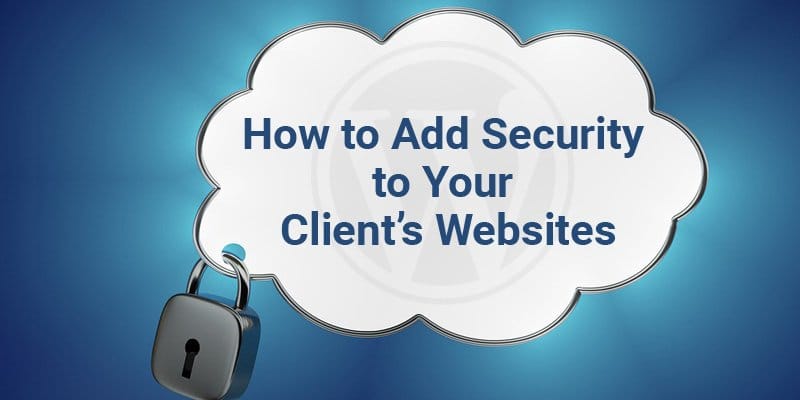How to Add Security to Your Client’s Websites

We strive for perfection in our jobs. We invest a large amount of time and work very hard to satisfy our client’s needs. When it comes to the IT sector, all that effort can be wiped away by a single notorious hacker.
Not only that all your time and work were for nothing, but it is almost like you handed your costumer’s information right away – the one you were supposed to protect. Every reliable and efficient IT Company with expertize knows that it should also invest the time in the security of the website.
With every job you get you get loads of sensitive corporate data or personal information and you have the responsibility to protect it.
In many cases, it is the law, but if you’re out of the legal trouble your business will still sink pretty soon – if your clients lose their trust in you the damage is almost always irreparable and the word will spread like fire, crushing down your reputation.
So take a look at these steps you can do in order to protect your client’s websites and keep their trust intact.
Choose the right hosting and keep things up-to-date
We all try to save money, especially if we run a small business. It’s not a big secret that many of us go for WordPress and that’s perfectly fine. But the problem starts with picking the hosting option.
Shared hosting seems like a good solution in the beginning and the fact that a large number of a different script, sites, and programs all run on the same machine is nothing to be alarmed about.
Unfortunately, this also means that other individuals outside your company also have access to your server. To put it simply your site has weak security and it’s more vulnerable.
To avoid this weak spot just go for a dedicated server which is not such an easy target for hackers.
The second thing you’ll have to do is a more ongoing thing – to make sure that every script or platforms you installed are up-to-date.
Many of the tools you use are open-source programs and the code is available to hackers as much as it is available to their developers. If you don’t keep that updated it will be easier to find security loopholes in the code.
It is basically the process of eliminating your platform or script weaknesses. WordPress allows you to check for the updates very quickly by simply logging into their dashboard where an update icon is.
Plug in some extra muscle
Ok, now that you have everything up to date you can proceed to a more active security plan and install some plugins.
WordPress has some free security plugins like Bulletproof Security or iThemes Security that take care of the inherent weaknesses in each platform and this way prevent the additional hacking attempt that could jeopardize your website.
If you want to go further beyond you should also take a look at SiteLock. It doesn’t just close the security loopholes but it also provides a daily monitoring.
This way it has you covered when it comes to detection vulnerability, active virus scanning, malware detection and more. If your website is the core of your business you should definitely consider this investment.
Add your ‛S’ letter
We think that up to this point everybody knows what HTTPS stands for. Maybe not all of your consumers do, but be sure that every hacker alive knows, and that not having that ‛S’ for ‛Security’ is like leaving an open door to them.
But even if hackers are not particularly interested in your website at this point, no one likes to see a red padlock in a browser bar.
Investing in your SSL certificate will cost you almost nothing and it will bring you an extra level of encryption making your website more trustworthy.
When you’re in the information technology business leaving your data unencrypted is not the smartest thing to do.
Make strong passwords
This may sound easy, but that’s exactly the problem – people tend to make it too easy. We usually tend to create simple passwords that will be easy for us to remember, but we don’t stop to think they will be easy to crack, too.
It might seem unbelievable, but 123456 is still the most frequently used password. Yes, we know that you feel like we’re underestimating you and you probably have a better one, but the thing is, you need to have a way better one.
The hackers don’t have to guess your birthday or your dog’s name, they are working with codes. So make sure you use a mix of letters, special characters, and numbers.
And make it long – typing a little longer during the login is nothing to the comparison with your personal information being at risk.
As you can see, keeping your client’s website secure can be really simple if you’re aware of its weakness.
Running on a dedicated server and keeping an eye on the updates is enough to keep you from trouble while the green padlock is mandatory for the business. The plugins are not such a big investment and a password demands just a little bit of creativity.

